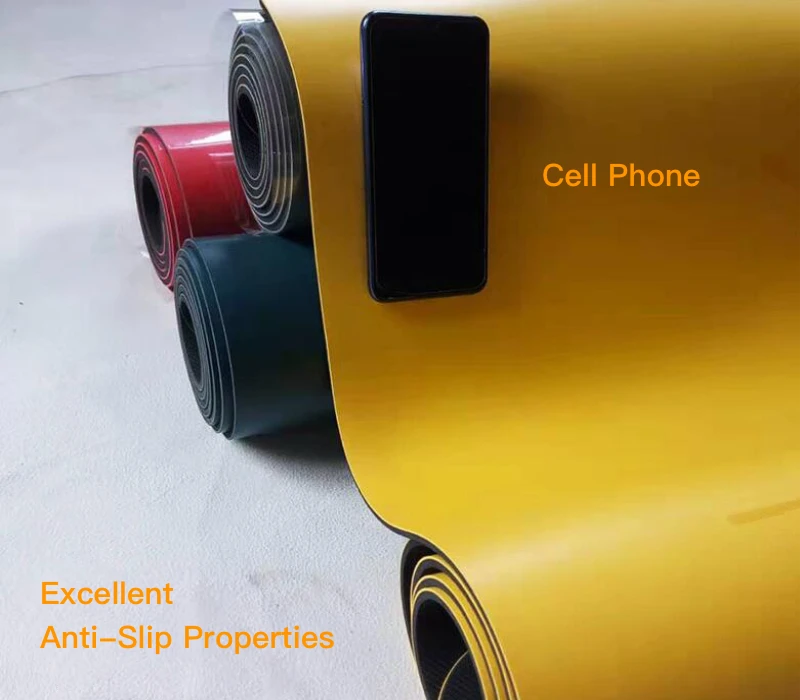When it comes to intense yoga practices like hot yoga or vigorous vinyasa flows, having the right mat can make all the difference. Natural rubber yoga mats stand out as a top choice due to their exceptional durability and moisture-wicking properties.
Durability
One of the primary reasons why natural rubber yoga mats are favored by many practitioners is their outstanding durability. Made from sustainably sourced rubber, these mats are built to withstand the rigors of regular use without losing their shape or integrity. Unlike some synthetic alternatives, natural rubber mats maintain their structural integrity even after prolonged exposure to heat and moisture, making them a reliable companion for intense yoga sessions.
Moisture-Wicking Properties
Intense yoga practices often lead to profuse sweating, which can create slippery conditions on the mat and compromise stability and safety. Natural rubber mats excel in this area due to their excellent moisture-wicking properties. The porous nature of rubber allows sweat to be absorbed quickly, keeping the surface of the mat dry and providing reliable traction for various poses and movements.
Moreover, the moisture-wicking ability of natural rubber mats helps prevent the growth of odor-causing bacteria and mold, ensuring a hygienic practice environment. This feature not only enhances the longevity of the mat but also contributes to the overall well-being of the practitioner.
Ideal for Hot Yoga and Intense Sessions
The combination of durability and moisture-wicking properties makes natural rubber yoga mats particularly well-suited for hot yoga and other intense yoga practices. In hot yoga classes, where temperatures are elevated to promote detoxification and flexibility, practitioners sweat profusely. A reliable mat that can withstand these conditions while providing stable footing is essential.
Natural rubber mats meet these requirements effortlessly, offering practitioners the support and confidence they need to fully engage in their practice. Whether holding challenging poses or flowing through sequences with fluidity, practitioners can trust in the grip and stability provided by their natural rubber mat.
Conclusion
In the world of yoga, where the connection between mind, body, and mat is paramount, choosing the right equipment can significantly enhance the practice experience. Natural rubber yoga mats emerge as a top choice for practitioners seeking durability, stability, and moisture-wicking properties, especially during intense sessions like hot yoga. With their ability to withstand the demands of rigorous practice while keeping practitioners grounded and supported, these mats prove to be invaluable companions on the yoga journey.
Explore, customize, purchase, and wholesale Natural Rubber Yoga Mats products.
FAQ
1. Are natural rubber yoga mats suitable for beginners?
Yes, natural rubber yoga mats are suitable for practitioners of all levels, including beginners. Their durability and excellent grip make them ideal for mastering basic poses and advancing to more challenging sequences.
2. How do I clean and maintain a natural rubber yoga mat?
To clean a natural rubber yoga mat, simply wipe it down with a mild soap and water solution or a specialized yoga mat cleaner. Avoid using harsh chemicals or abrasive scrubbers, as they may damage the mat’s surface. Allow the mat to air dry thoroughly before rolling it up for storage.
3. Can natural rubber yoga mats cause allergic reactions?
While rare, some individuals may be allergic to natural rubber latex. If you have a latex allergy, consider opting for a yoga mat made from alternative materials such as TPE or PVC. Always check the product specifications and consult with your healthcare provider if you have concerns about allergies.
4. Do natural rubber yoga mats emit a strong odor?
Natural rubber yoga mats may have a faint rubbery odor initially, but this typically dissipates over time with proper airing and use. To expedite the process, you can unroll the mat and let it air out in a well-ventilated area before using it for your practice.
5. Can I use a natural rubber yoga mat for other types of exercise?
While natural rubber yoga mats are primarily designed for yoga, they can also be used for other low-impact exercises such as Pilates, stretching, and meditation. However, they may not provide adequate cushioning for high-impact activities like HIIT or cardio workouts.
